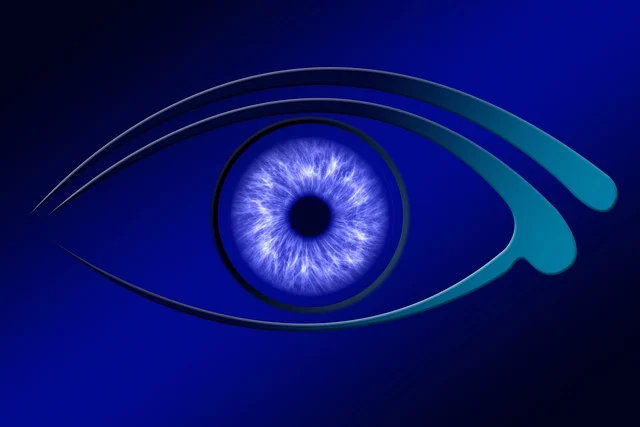The Human Eye Concept For Class 10 is one of the most fascinating organs of the body. It allows us to see the world, perceive colors, shapes, movements, and light. In Class 10 Science (Chapter 11 – The Human Eye and the Colourful World), this topic is explained in detail with diagrams and concepts essential for CBSE board exams.

Introduction| The Human Eye Concept For Class 10 with Diagram and Eye Defects
Let’s dive into the structure, working, defects, and functions of the human eye in simple language.
👁️ Structure of the Human Eye – The Human Eye Concept For Class 10
The human eye is a roughly spherical organ situated in the eye socket (orbit) of the skull. It consists of several parts that work together to help us see.
📍 Important Parts of the Eye:
| Part | Function |
|---|---|
| Cornea | Transparent front layer that refracts (bends) light |
| Iris | Colored part of eye; controls size of pupil |
| Pupil | The opening that regulates amount of light entering the eye |
| Lens | Transparent structure that focuses light onto the retina |
| Retina | Inner layer with light-sensitive cells (rods & cones) |
| Ciliary Muscles | Adjusts the shape of lens (accommodation) |
| Optic Nerve | Carries visual signals to the brain |
| Aqueous Humor | Fluid between cornea and lens |
| Vitreous Humor | Gel-like fluid that fills the eye ball |
💡 How Does the Human Eye Work? – The Human Eye Concept For Class 10
- Light enters through the cornea.
- It then passes through the aqueous humor, pupil, and lens.
- The lens focuses the light rays on the retina.
- The retina converts light into electrical signals using rods and cones.
- These signals are sent to the brain through the optic nerve.
- The brain interprets the image (inverted on the retina but corrected by the brain).
🔄 Power of Accommodation
Accommodation is the ability of the eye to adjust its focal length to clearly see objects at various distances.
- Done by ciliary muscles changing the curvature of the lens.
- Lens becomes thicker for nearby objects, thinner for distant ones.
❌ Common Defects of Vision
| Defect | Cause | Correction |
|---|---|---|
| Myopia (Short-sightedness) | Eyeball too long or lens too curved; image forms in front of retina | Use concave lens |
| Hypermetropia (Long-sightedness) | Eyeball too short or lens not curved enough; image forms behind retina | Use convex lens |
| Presbyopia | Aging of eye muscles, loss of accommodation power | Use bifocal lenses |
| Cataract | Clouding of lens due to aging | Surgery (lens replacement) |
🌈 Why Do We See a Rainbow?
This chapter also introduces the concept of dispersion and the formation of rainbows due to refraction, reflection, and dispersion of sunlight through raindrops.
Other phenomena:
- Tyndall Effect
- Scattering of Light (why the sky is blue, sunset is red)
🧠 Fun Facts– The Human Eye Concept For Class 10
- The pupil contracts in bright light and expands in dim light.
- The human eye can distinguish about 10 million different colors.
- Blind spot: Area on retina with no photoreceptor cells where optic nerve exits.
📘 NCERT Reference & Link – The Human Eye Concept For Class 10
This topic is part of Class 10 Science – Chapter 11: The Human Eye and the Colourful World.
🔗 Download NCERT Class 10 Science Book PDF (Official)
(Credit: NCERT | Source: ncert.nic.in)
📝 Key Points for Exams
- Name the parts of the eye and their functions.
- What is the function of the iris and pupil?
- Explain myopia and its correction with a ray diagram.
- What is the power of accommodation?
- Define persistence of vision.
📚 Related Topics
- Light – Reflection and Refraction Class 10
- Colorful World Class 10 Notes
- Eye Defects and Correction Tricks
✅ Conclusion
The human eye is not just a biological organ—it’s a marvel of evolution and physics. Understanding its structure and function helps you appreciate both science and the miracle of vision. Master this chapter with these notes, and score full marks in your biology section!
You can access the official NCERT Solutions for Class 10 Mathematics on the NCERT website at the following link:
NCERT Class 10 Mathematics Solutions
This page will guide you to the textbook and solutions, as provided by the National Council of Educational Research and Training (NCERT).
📘 Math & Science Solutions by Class
🔹 Class 10
🔹 Class 9
🔹 Class 8
🔹 Class 7
🔹 Class 6
🔹 Class 12
🔹 Class 11
- Class 11 Math Solutions
- Class 11 Physics Solutions
- Class 11 Chemistry Solutions
- Class 11 Biology Solutions
Class-wise Solutions
Class 12:
Class 12 Physics – NCERT Solutions
Class 12 Chemistry – NCERT Solutions
Class 11:
- Class 11 Physics – NCERT Solutions
- Class 11 Chemistry – NCERT Solutions
- Class 11 Biology – NCERT Solutions
- Class 11 Math – NCERT Solutions
Class 10:
Class 9:
Class 8:
Class 7:
Class 6:
Subject-wise Solutions
Physics:
Chemistry:
Biology:
Math:
- Class 11 Math – NCERT Solutions
- Class 10 Math – NCERT Solutions
- Class 9 Math – NCERT Solutions
- Class 8 Math – NCERT Solutions
Science:
- Class 10 Science – NCERT Solutions
- Class 9 Science – NCERT Solutions
- Class 8 Science – Oxford Solutions
- Class 7 Science – Oxford Solutions
- Class 6 Science – Oxford Solutions
